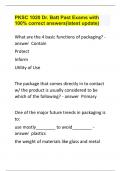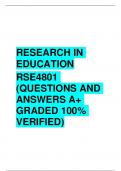Exam (elaborations)
practice test bank medical-surgical-nursing-500 questions
- Course
- Psy 401
- Institution
- Abc College
1. According to Maslow, which of the following categories of needs represents the most basic? a) Physiologic needs Physiologic needs must be met before an individual is able to move toward psychological health and wellbeing. b) Self-actualization Self-actualization is the highest level of nee...
[Show more]







